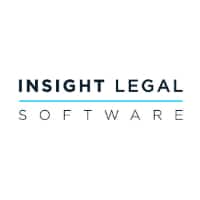 By Legal Futures’ Associate Insight Legal
By Legal Futures’ Associate Insight Legal
In our previous article – https://www.insightlegal.co.uk/community/white-papers/shortlisting-software-suppliers, we shared with you the traits to look for in a reputable software supplier. The one attribute that we didn’t cover, because it’s so important that it deserves an article all of its own, is that of data migration.
When we talk about data migration – also known as data conversion – we mean your new supplier moving your valuable data from your previous system in to your new one. You may think that this is a service offered by all software providers; certainly it is something which most claim to offer. However, the level and complexity of data migrations can vary enormously between suppliers. Not only that, but the cost can vary substantially too.
Firstly, it is imperative to make sure that the data from the current system can be brought forward into the new one. It is likely that many years of client data and financial information is stored in your current system, along with a wide range of matter correspondence, time recording and firm-wide settings amongst other things. Manually re-entering it is very unlikely to be practical, and the prospect of leaving it all behind is completely out of the question.
Data conversion is technical and requires a combination of specialist skills. Think of it like taking the pieces from a complex jigsaw and moving it to a different place. Those pieces need to be reassembled in a different place and in a different shape and size, but still form that same, clear picture. You should ask suppliers for a detailed specification of what you can expect, and also ask about past successful conversions involving your current system, how many have been done and whether any reference sites are available to talk to.
The important questions to ask about data conversion are:
- How much of the practice’s existing data will be brought across? If not all the data can be converted, what is left behind?
- What will change? Will you be able to keep your existing file references and the same structure for your chart of accounts?
- How is the data converted? Will you retain each and every transaction, or just brought-forward balance? Where the supplier claims to bring forwards transactions, are these part of the ledger or simply a ‘snapshot’ of what went before?
- How much will the conversion cost? It is likely to be priced separately from the software.
- How do you know the migration is going to work? Is there a ‘trial run’ built in to the timescales and, of course, the cost?
The scope of each data migration will likely be different, but it is important to know that offerings from different providers are not always the same. At the very least, you should expect your data conversion to include:
- Full Client and matter details
- Firm details, including branches, departments, matter types and fee earners
- Banking information, including transactions.
- Matter ledger transactions
- Time recording entries and their correct billed, unbilled or written-off status
- Nominal ledgers and purchase ledgers, including chart of accounts and detail of transactions from the current and previous financial years
- Matter document histories, including the full electronic case file
It is wise to ask how any issues arising relating to the conversion will be resolved. A trial run is an important part of the process and you should make sure that this is included in your pricing quote and your timescales.
Finally, and thinking ahead to the long term future, ask how this data will be made available to you when you come to move on to your next software package in the future. This is particularly important if your system is cloud hosted and your data isn’t living within your hands. Your data is your property, and you don’t want to end up ‘piggy in the middle’ in a dispute over data between suppliers.
Deborah Witkiss, Chief Operating Officer at Insight Legal Software
Next time: Part 4 – Bringing it altogether. A quick re-cap on the steps you should have taken to reach the point where you can share the good news with the software supplier you have chosen to partner with.









